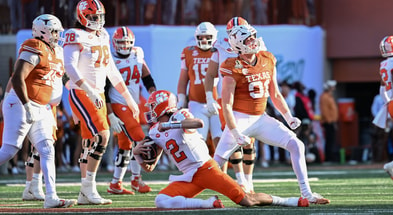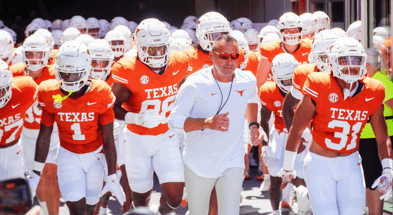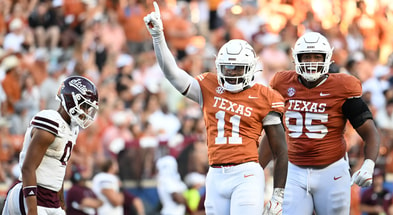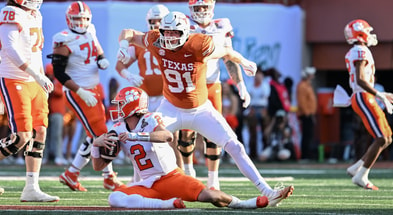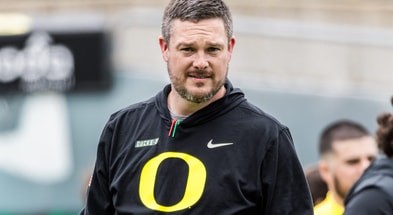Who would have won a 16-team playoff in 2024?

As everyone debates potential changes to the playoff format, one potential option was presented in which the top 16 teams per the college football playoff rankings would have been straight seeded into a tournament.
[Sign up for Inside Texas TODAY and get the BEST Longhorns scoop!]
No byes, no automatic bids for champions, just the top 16 teams as ranked by the committee seeded by that ranking. We didn’t get a straight seeding because of the pre-established rules about conference champion, auto-bids, and bye weeks which quickly went awry when the Pac-12 was disintegrated and the top two programs left the Big 12.
There were some big losers and big winners as a result of the quickly out-dated format, which you’ll see from the results below:
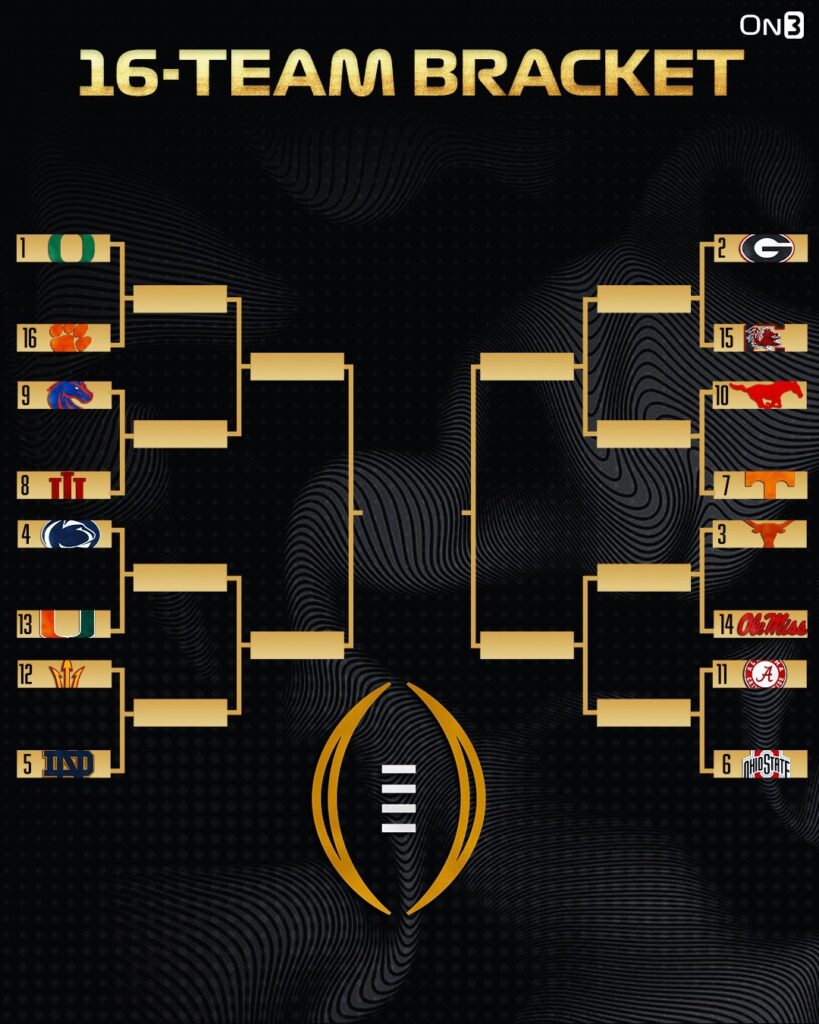
My question is this…if the tournament had been seeded in this fashion…who wins? How much is different? Which teams are the big winners or losers if the matchups had played out in this fashion rather than the bizarre format we got instead?
I’ve got some ideas…
1st round
Oregon over Clemson
Boise State over Indiana
Penn State over Miami
Notre Dame over Arizona State
South Carolina over Georgia
Tennessee over SMU
Ole Miss over Texas
Ohio State over Alabama
The greatest injustice of the first expanded playoff bracket was found in Oregon’s quadrant of the bracket. The Ducks’ 13-0 season and Big 10 Championship were rewarded with a bye week before a brutal opening matchup with the Ohio State Buckeyes, who’d adjusted since the first game between these teams and put an absolute whooping on Oregon.
I think the results of the playoffs made clear Ohio State was the best team in the tournament, but this straight seeding is wildly more in line with what Oregon’s actual season should have garnered them in terms of bracket path. Cade Klubnik may have made this game interesting as he did against Texas, but there’s no chance the Clemson defense would have fared any better against Oregon’s spread outside zone game than they did against the Longhorns’.
Penn State vs Miami would have been one of the more interesting contests. Miami’s offense would have been problematic for every team in the tournament, but the Hurricane defense wasn’t built for Tyler Warren and the Nittany Lion run game while Abdul Carter would have allowed Penn State to find a few stops against Cam Ward.
No more bye week for Arizona State or Boise State, I think the former now makes a first round exit in the cold of South Bend but the latter could overcome Indiana in a hard-fought game.
On the other side of the bracket, Ohio State still has a good path. Alabama was too offensively limited to keep up and too young in the secondary to handle the Buckeyes. I think the Gunner Stockton-led Georgia Bulldogs are unable to fend off a South Carolina team that was very good down the stretch and could get some difference-making plays from quarterback LaNorris Sellers where Georgia was experiencing difference-making mistakes from some of the back-ups forced into action.
SMU vs Tennessee is a fascinating matchup since Tennessee was not in the same shape in the playoffs as the Penn State squad that squashed the Mustangs, but I suspect the Vols’ D-line and not having to play in Columbus still results in an early exit for the Methodists.
Drawing Ole Miss in the first round would have been a glorious catastrophe for Texas. The Steve Sarkisian vs Lane Kiffin narrative would have been tremendous and contributed to some next-level pre-game hype. In the actual game, Ole Miss could have presented some of the same issues as Clemson with the Jaxson Dart RPO spread offense while also bringing a real defense that wouldn’t allow Jaydon Blue and Tre Wisner to each go over 100 rushing yards. It would likely have been a close game in line with the Texas vs Arizona State contest but against an opponent with much better overall talent than the Sun Devils.
Texas gets dropped early and everyone curses the format for allowing a 3-loss team in.
Round 2
Oregon over Boise State
Notre Dame over Penn State
South Carolina over Tennessee
Ohio State over Ole Miss
Oregon’s much more pleasant, first-time playoff experience rolls on with a second win of the season over the Boise State Broncos. Notre Dame vs Penn State is a game we already saw play out and, while it was a hard-fought battle, there’s no reason to pick a different outcome.
I think Tennessee’s limitations would catch up to them against South Carolina, the upset darling of this tournament, who continue to ride Sellers’ play-making and a dominant D-line past imposing SEC opponents in our hypothetical.
Top 10
- 1Breaking
Landmark Approval
House vs. NCAA Settlement
- 2New
EA Sports CFB 26
Schools paid based on usage
- 3
Manning Passing Academy
College QB attendees announced
- 4
Keelon Russell
Mother releases statement
- 5Trending
MLB Mock Draft
New No. 1, big shakeup
Get the On3 Top 10 to your inbox every morning
By clicking "Subscribe to Newsletter", I agree to On3's Privacy Notice, Terms, and use of my personal information described therein.
Kiffin’s magic runs out against Ohio State, who overwhelm the back end of the Rebel defense with Jeremiah Smith while Jim Knowles‘ unique deployments of Caleb Downs cause fits for Kiffin and Dart in trying to get the ball to the right spots.
The Longhorns shake their heads at home knowing they could have beaten several of these remaining teams.
Round 3: Semifinals
Notre Dame over Oregon
Ohio State over South Carolina
This is where I think things tend to revert to the actual form. South Carolina would have been an interesting challenge for the Buckeyes due to their pass-rush, but it’s hard to keep down Smith and the passing game and I don’t think SC had the offensive dynamics to survive if Sellers was finally held in check.
Notre Dame vs Oregon is an outstanding matchup and this is the big question of our exercise. Were the Irish truly the second best team or did they get a good draw in the tournament?
In truth I think the Irish gave Ohio State as much of a game as anyone in the tournament thanks to a strong defense, effective game management by head coach Marcus Freeman, and Leonard’s hero-ball. I think they narrowly edge out the Ducks like they did everyone else in this format only to draw the same rematch and…
Round 4: Final
Ohio State over Notre Dame
Ohio State really proved they were the best team in the tournament by going through Oregon, Texas, and Notre Dame in the actual format without having to overly sweat any of those outcomes. The Longhorns gave Ohio State the toughest game of any team and still fell pretty short of the goal.
Commentators will, or should, study the Buckeye roster composition for a sense of what it takes to navigate an expanded playoff. There were a lot of narratives after the game about how Ohio State did this but they ranged from the homer takes by alumni like Kirk Herbstreit, who remarkably suggested this was a repudiation of building through the transfer portal despite the Buckeyes starting transfers up and down the offense, or the bitter/comedic takes by opposing fans like Shane Gillis who cast aspersions on the source of funding for the roster.
The real takeaways should center around the following elements of the roster:
- Ohio State’s roster wasn’t cheap.
- The Buckeyes had older, NFL-caliber players up and down the offensive and defensive lines.
- Ohio State’s vertical passing game was so potent defenses had to change their normal defensive strategies to have a chance of holding them in check.
- Will Howard brought veteran management at quarterback and dual-threat abilities on key downs.
If I were looking to build a team to win the playoffs, those are the traits I’d look to emulate. Those qualities will consistently produce champions regardless of the format.




